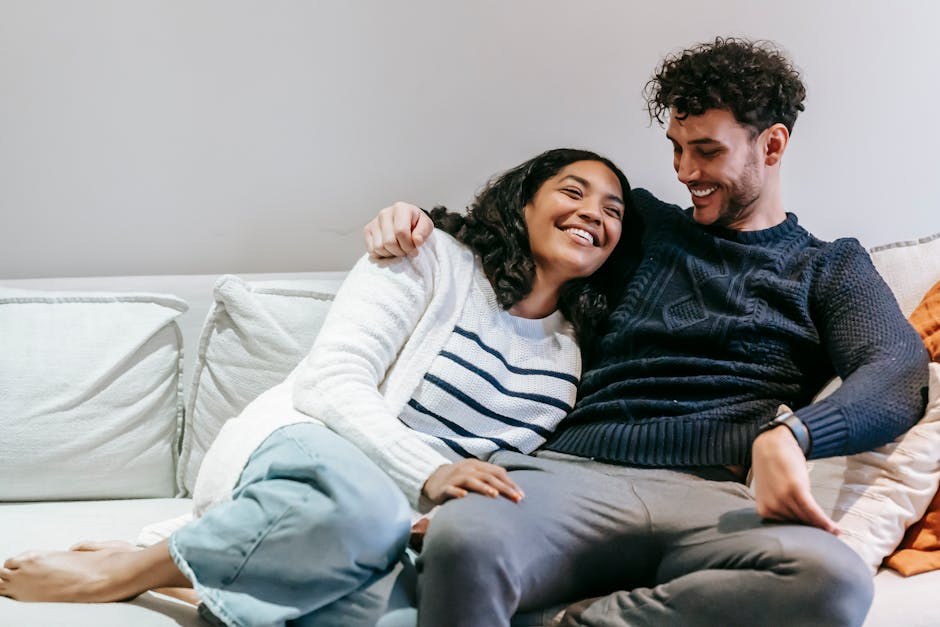Confidence never goes out of fashion – it helps in interviews, first dates, and every everyday moment when you want to be taken seriously. If high self-belief doesn’t come naturally, don’t panic. You can still communicate certainty through deliberate choices in body language and voice. What follows reimagines familiar advice into a practical guide you can use right away, with clear examples, mistakes to avoid, and small adjustments that add up to a stronger presence. You’ll be practicing outward cues, not pretending to be someone else; the aim is to let your best self show through your body language rather than to mask who you are.
Why physical cues change how people read you
We judge one another quickly – sometimes in seconds – and those snap impressions often come from posture, gestures, and facial expressions. That’s why body language can shift a conversation before a single word is spoken. When your stance is open and relaxed, people tend to assume you’re at ease. When your movements are tight and guarded, others may think you’re uncertain. You’re not stuck with the first impression, though. By choosing different physical habits, you can influence how others experience you and, over time, how you experience yourself.
Principles to guide every interaction
Three ideas run through this entire approach. First, comfort reads as confidence – if your body language is unforced and economical, you look grounded. Second, availability beats bravado – open signals invite conversation and make you seem approachable. Third, congruence matters – when your words and body language match, people trust what you say. Keep these in mind as you try the techniques below.

Practical ways to look self-assured in social settings
Think of these habits as a toolkit. You won’t use all of them at once; choose a few, practice until they feel natural, and then layer in more. Each tactic reframes an everyday behavior so your body language supports your message rather than fighting it.
-
Unfold your arms and let your torso breathe
Crossed arms can signal that you’re closed off, even if you’re simply cold or comfortable that way. It narrows your frame and makes your body look as though it’s retreating. Instead, rest your arms at your sides or lightly clasp your hands in front of you. If you need something to do, hold a glass by your side, not directly in front of your chest. This subtle shift in body language frees your shoulders, lengthens your torso, and tells others you’re open to conversation.
If you catch yourself folding up again – it happens – take a slow breath and allow your arms to fall to a neutral, relaxed position. The goal is ease, not stiffness.

-
Claim comfortable space without crowding
People often make themselves physically small when nervous – they tuck elbows in, keep gestures tiny, and compress their posture. Instead, allow natural movement and a bit of width. Plant your feet roughly hip-distance apart. When you speak, gesture from the shoulder rather than fluttering at the wrists. This is not about looming over anyone; it’s about using everyday body language to show you belong in the room. A calm, measured reach to indicate an object or an open-palmed gesture to support a point both quietly say, “I’m comfortable here.”
-
Lift your gaze and align your head
Walking with your head up signals readiness to engage. It also aligns your spine and helps your breathing feel easier. Think of a string lightly drawing the crown of your head upward. When you’re standing still, aim your chin parallel to the floor – no dropped chin into the chest, no crane toward the ceiling. This neutral alignment is simple body language that reads as confident because it shows you’re alert and available.
-
Balance eye contact with easy breaks
Eye contact can be intimidating if you’re unsure how much is enough. A simple approach: look at the person while they speak, glance away briefly to think, then return to them. Those soft breaks keep the gaze from feeling like a stare while still conveying focus. Your body language should suggest you’re actively listening – a relaxed face, minimal fidgeting, and eyes that return to the speaker do exactly that.

If you feel awkward, try the triangle trick: alternate your gaze among one eye, the other eye, and the speaker’s mouth. This gives movement that feels natural and keeps your attention anchored.
-
Let your phone rest out of sight
Clutching a phone is an easy escape hatch when you feel exposed, but it also signals disinterest. Placing it on the table face down still splits attention; the device becomes a visual competitor. Tuck it away instead. Empty hands automatically improve body language – your shoulders drop, your gestures look more organic, and you’re less tempted to glance down mid-conversation. If you truly need to check it, excuse yourself and return without the device in hand.
-
Smile for warmth, not as a mask
A genuine smile relaxes your face and softens the entire exchange. You don’t need a grin – a small upward curve with soft eyes is enough. Smile as a greeting, when you’re listening and recognize something pleasant, and when you agree. This kind of body language doesn’t force cheerfulness; it communicates that you’re friendly and confident in your skin. If smiling feels unnatural, practice easing tension in your jaw and letting your cheeks lift slightly as you exhale. The change is subtle yet noticeable.
-
Use the triple nod to keep conversations flowing
When the other person pauses, nodding gently three times encourages them to continue. It’s a simple listening tool that often prompts richer answers. Combine the nod with an open posture and steady eye contact, and your body language says, “I’m with you – keep going.” This technique is especially helpful if you’re shy and worried about what to say next; the conversation carries itself while you gather your thoughts.
-
Slow your voice and articulate
Rushed speech can come across as nervous, even when your content is strong. Before you start a story or answer a question, inhale through your nose, feel your belly expand, and release the sentence on the exhale. Pauses are your friend – they give listeners time to absorb your message and give you time to choose words. Your body language should match this calm delivery: still shoulders, steady head, hands that move with purpose rather than jitter. You’ll notice that people lean in when you slow down; it signals that what you’re saying deserves attention.
-
Stand by your opinions with kindness
Confidence isn’t about dominating; it’s about owning your perspective without apology. If someone disagrees, acknowledge their view and restate yours clearly. Keep your palms visible to signal openness, square your shoulders to the person, and keep your voice even. This congruent body language supports your words and prevents the exchange from feeling combative. You’re not trying to win – you’re trying to be understood.
-
Offer appropriate, respectful touch
In many settings, a brief, firm handshake or a light tap on the shoulder can reinforce connection. The key is appropriateness: know the context and the relationship. When suitable, touch can reinforce poise because it shows you’re not afraid of closeness. Pair that with a friendly expression and relaxed stance. This combination of social awareness and considerate body language reads as mature confidence.
Making the habits natural
At first, you’ll think about every move – where your hands are, whether your eyes are engaged, how often you nod. That’s normal. Pick two behaviors to focus on for a week. For example, choose “head up” and “phone away.” Once those feel automatic, add two more. Over several weeks, your body language recalibrates. You’re not faking; you’re practicing a set of physical defaults that better reflect your intentions.
Common pitfalls and how to fix them
-
Overcorrecting into stiffness
Some people hear “stand tall” and lock every joint. Rigidity reads as tension, not strength. If you tend to stiffen, imagine your spine as a column and everything else – shoulders, jaw, hands – hanging freely from it. Shake out your wrists before you enter a room. Let your body language move with your breath rather than against it.
-
Gesturing without intention
Waving hands aimlessly can distract from your message. Anchor gestures to meaning: open palms when offering an idea, a contained pinch gesture when describing details, a measured chop to mark transitions. Intentional movement supports clarity and keeps body language from stealing the spotlight.
-
Smiling through discomfort
A smile that never drops can look pasted-on. It’s okay for your expression to change with the conversation. Let warmth appear when you greet, when you appreciate, when you agree – then return to a neutral, relaxed face as you listen. This truthful rhythm of body language makes you seem more trustworthy.
-
Unconscious barriers
Bags, laptops, and coffee cups often drift into a protective shield across the torso. Place items to your side rather than between you and others. This clears your front line of body language and makes approaching you easier.
Applying the cues in real situations
On a first date
Arrive, pause at the doorway, inhale, and let your shoulders drop on the exhale. Put your phone away before you greet them. Offer a natural smile and, if appropriate, a quick handshake. Sit with an open torso – no crossed arms – and angle your knees toward your date. When they speak, practice the triple nod and a few soft questions. These straightforward choices in body language create an atmosphere that feels safe and engaging.
At a party where you know few people
Start by standing near a natural hub – the snack table or an art piece on the wall – where conversation begins easily. Keep one hand free and your chest unobstructed. Make brief eye contact with those nearby, offer a small smile, and say something simple like “Mind if I join you?” After you’re in the group, resist the urge to fold up or hover behind your phone. Your body language should say you’re present: loose shoulders, gestures that include the circle, and feet planted rather than pointed toward the door.
In a meeting or interview
Set your items down neatly and sit with your back supported, not perched on the edge. Place your forearms on the table with wrists relaxed, palms visible. When asked a question, take a beat – breathing buys you clarity – then answer at a measured pace. If you disagree with a point, turn your torso toward the speaker, indicate your view with a calm hand gesture, and keep your face neutral. Consistent, composed body language confirms that you’re receptive and self-possessed.
On stage, during a toast, or speaking up in class
Before you begin, plant both feet and find a tall, neutral stance. Look at one person, then another, to spread attention. Let your hands rest at your sides between gestures. When you emphasize a sentence, lift your hands once, then let them return to stillness – motion has more impact when it isn’t constant. This kind of disciplined body language helps your message land cleanly and keeps nerves from hijacking your delivery.
Tiny behaviors that make a big difference
-
Breathing that steadies everything
The fastest way to settle your presence is to slow your breath. Inhale gently through your nose, pause, and exhale slightly longer than you inhaled. As your breath lengthens, tension drains from your shoulders and jaw. Your body language will follow suit – gestures smooth out, posture loosens, and your voice finds a richer tone.
-
Micro-adjustments to posture
Think “tall, not tight.” Imagine the top of your head rising while your ribs float down and back. Let your tailbone point toward the floor. These micro-cues make your silhouette more confident without any theatrical posing. It’s everyday body language , refined.
-
Facial expressions that match your words
When your story turns serious, allow your features to reflect it. When it turns playful, let your eyes brighten. This alignment between message and body language makes people believe you. Inconsistency – smiling when you’re irritated or blank when you’re thrilled – confuses listeners and weakens your point.
-
Listening with your whole body
Angle your torso toward the speaker, keep your feet pointed their way, and minimize self-grooming gestures like picking at nails or adjusting hair. These quiet pieces of body language tell the other person they matter, which often makes them respond with more openness and respect.
-
Exiting gracefully
Confidence shows when you wrap up, too. When it’s time to move on, wait for a natural pause, smile, and say something like “I’ve enjoyed this – I’m going to say hello to a friend over there.” Stand, gather your things without rushing, and leave with steady steps. Your final moments of body language are the last impression they’ll keep.
Shaping a confident presence that still feels like you
Faking confidence isn’t the destination; integration is. As you practice these choices in body language , notice which ones amplify your personality rather than replace it. Maybe you’re naturally warm – your best signals will be eye contact and smiles. Maybe you’re analytical – your strength will be measured pace and precise gestures. The purpose of these tools is to help you communicate the real thing you offer, not to layer on a performance. Keep what serves you and let the rest go.
Remember, you’re not auditioning for a role; you’re allowing people to meet you without the fog of nervous habits. Stand a little taller, open your chest, meet eyes, speak at a pace that lets your thoughts breathe, and let your hands underline the point instead of hiding it. With consistent, thoughtful body language , others will sense the quiet certainty you’re building – and soon enough, you’ll feel it from the inside out.